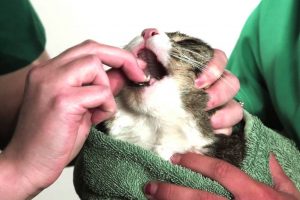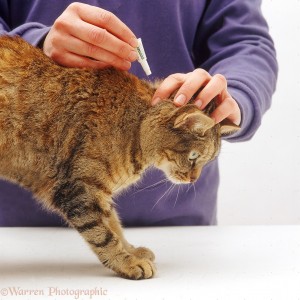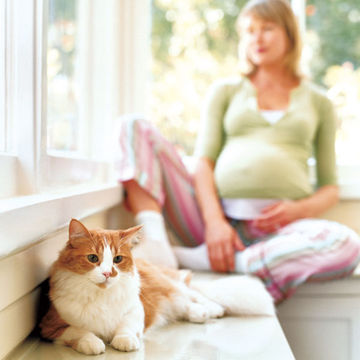
“My cat has worms and I’m pregnant… What should I do?”
Can Pregnant Women Have Pet Cats?
The simple answer is yes. It is perfectly all right to have a cat when you are pregnant. You do not have to get rid of your cat. Stay calm, know the facts and do not make hasty life-changing decisions based on idle fear. Most importantly, do not leave your cat unloved due to fear of infection. This could lead to even more issues such as an unhappy, antisocial cat. It is more effective to find a way of solving this issue so the whole household can live in harmony.Can I Catch Worms From My Cat?
Yes, some feline worms are transferrable to humans including roundworms, hookworms, and tapeworms. Cats infected with roundworms shed worm eggs in their feces. People catch roundworms by accidentally swallowing the eggs or dirt contaminated with cat feces containing the infectious eggs. Once in the human body the larvae can migrate through various internal organs (Visceral Larva Migrans) with the most common organ being the eye (Ocular Larva Migrans). Humans can get cat hookworms by having close skin contact with moist, larvae contaminated soil. These hookworm larvae can survive for many months in the soil and they can penetrate into human skin where they migrate through the different layers of the skin (Cutaneous Larva Migrans) causing itching and red, swollen tracts. Some species of tapeworm from cats transfer by accidental swallowing of an infected flea, although this is a rare occurrence. Adult tapeworms do not develop in humans, instead, the larvae may produce a cyst inside the body, most commonly on the liver, lungs and/or brain.My Cat Has Worms and I’m Pregnant… Is this dangerous?

Kitten and baby
What Can I Do To Protect Myself and My Baby?
For pregnant women, the following suggestions help to lessen the chances of cat worm transmission to humans:-
Practice basic hygiene always. Frequently wash your hands with soap and water, especially before cooking food and eating. This removes the eggs and soil on the hands preventing accidental swallowing of the eggs or the egg-contaminated soil.

Basic hygiene is a must.
- Wash hands immediately after handling the cat to prevent accidental swallowing of worm eggs and infected fleas, if there are any on your cat.

Avoid handling cat’s litter in the meantime.
- Reduce personal exposure to cat feces. Have another person in the household clean the cat litterboxes and handle the cat poo while you are pregnant. If there is no one else to do these, use hand gloves.
- If the cat has not yet been treated for worms and fleas; and placed on a preventive program, isolate them in the meantime or at least do not allow them on the furniture, bed, kitchen countertops and dining tables.
-
Thoroughly clean kitchen countertops and dining tables, including all equipment and utensils before preparing and serving meals.

Do not allow cat on areas where food is prepared
- Clean the house and the yard to lessen environmental contamination. Vacuum floors and furniture to physically remove eggs and fleas. Some parasite eggs do not have protective coating so exposure to sunlight by airing out, washing with warm water and bleach and drying would be sufficient to destroy these eggs. Some eggs have a protective coating making them more resistant and they can be destroyed by the higher temperature of live steam.
- Do not place the cat’s litterbox in areas of the house where you most often use or stay. Avoid using dusty litter. Use covered litterboxes or those that have high sides to prevent scattering. Change litter frequently to remove stool before the eggs have the time to develop and become infectious.
- If your family has an outdoor sandbox for children, cover it to prevent feral cats from using it as litterbox.
How Do I Prevent Further Infection?
The following measures, on the other hand, help ensure the eradication of worms in cats and prevent reinfection:-
Take the cat to the veterinarian’s office for a fecalysis. The choice of medicine for treatment will depend on what kind of worm is present. Do not self-medicate your cat with over the counter deworming medicines because it might not be for the kind of worm your cat has and the dose may be incorrect.

Bring cat to the veterinarian for deworming
- If you have more than one cat, have the others dewormed also and follow the veterinarian’s recommendation of a regular deworming schedule for your cats as a preventive measure.
-
Have a regular flea treatment and prevention program for your cat so that he will not get tapeworms from swallowing an infected flea while grooming himself.

Apply regular flea treatment, this also prevents tapeworm infection.
- Keep cat indoors. This way will he will not be able to eat rodents that may have worm larvae in their tissue and other animal’s stool which may have worm eggs. If you take the cat outside, do not bring them to areas where there are feral cats.
- When you leave the house for an extended period, consider hiring a pet sitter to take care of the cat rather than leave the cat in a boarding facility where they may come into contact with other cats that might have worms. If you leave the cat at home make sure you have a cat drinking fountain so it has a constant supply of water.
- When you bring a new cat into the house, isolate him first until he has seen the veterinarian, has been treated for worms/fleas and had vaccinations.
- Tapeworm eggs in the environment can be eaten by rodents wherein the larvae will develop in the tissues. Rodent population control is as important as flea control.
- Sanitation is important. Clean areas where cat stays using the methods described in the previous section above.

